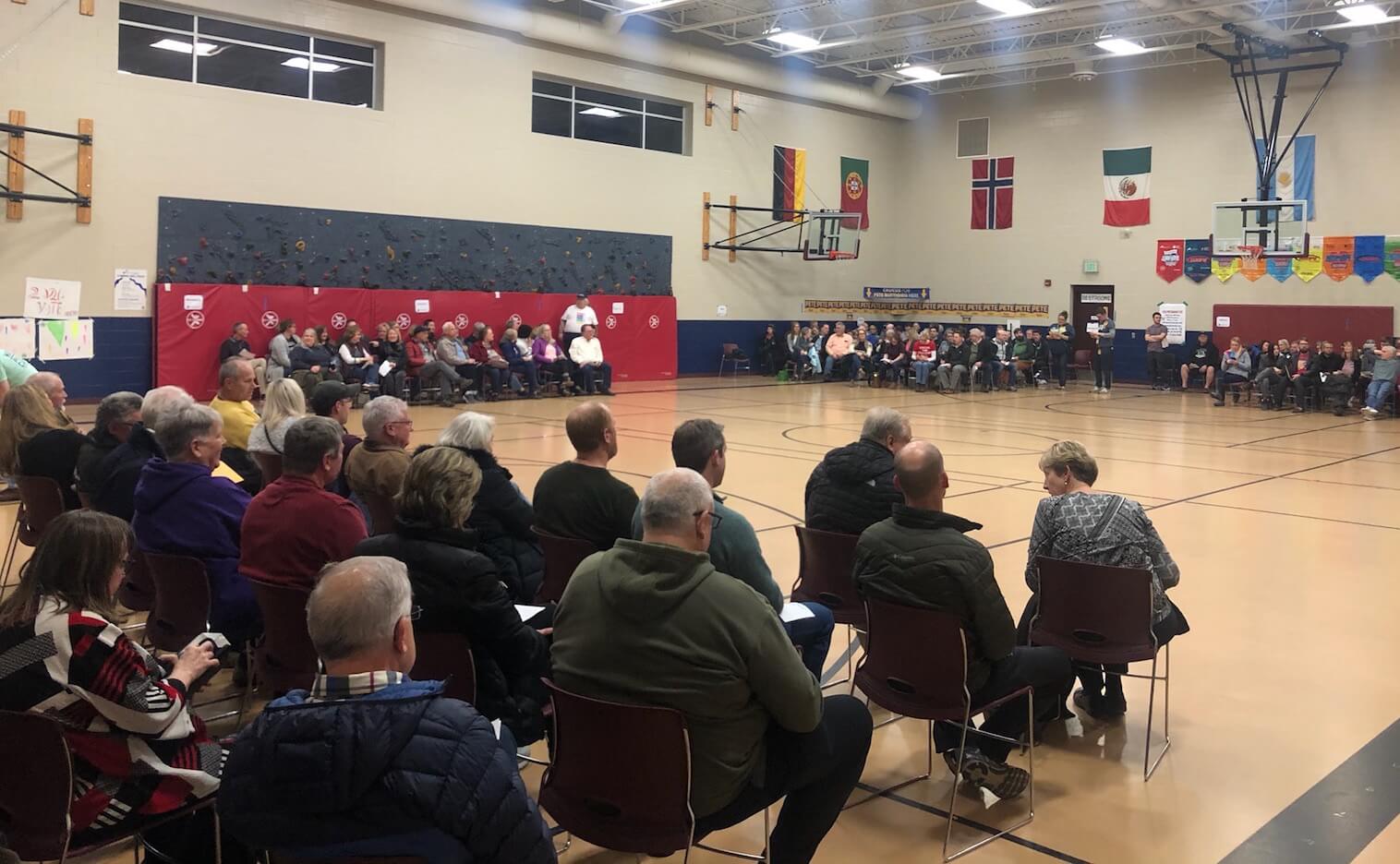
As results from the Iowa Caucus finally come in, many are noticing the difference in who leads the three (really, four) sets of numbers. There’s likely to be a lot of debate around Bernie Sanders leading the initial raw vote (or popular vote, as they like to say) and Pete Buttigieg probably winning the State Delegate Equivalent (the only number released in past years and the one most media outlets use to declare a “winner”).
The Iowa Democratic Party this year released all three sets of numbers (first alignment raw vote, second alignment raw vote, final SDEs), after Sanders activists pushed the DNC to mandate it. The additional data turned out to be a really useful in better understanding the dynamics of the race, but it also will lead to some debate over who “won.”
But before everyone uses this as yet another reason to trash Iowa, let’s explain both why this happens in Iowa and why you may see a similar scenario in other states, even ones that hold primaries.
In a presidential nomination process, at the end of the day, you are selecting delegates to go to the national convention for specific candidates. Those delegates are actual, real live human beings.
Because of this, the votes of tens of thousands of people have to eventually be represented in the form of one person that serves as a delegate. The mathematical reality of that is that when you’re trying to represent a big number with a little number, things may not turn out perfectly proportional.
[inline-ad id=”0″]
In Iowa, the focus has been on how individual voters in rural precincts end up getting weighted more for SDEs than those in urban areas. This is because each precinct gets a set number of delegates based off of the past number of Democratic votes in recent elections. It’s not a perfect system, but when you have to elect people on caucus night to be delegates to the county convention, who then go to the district and state convention to pick national delegates, you have do something.
The issue here becomes that it is easier to gin up larger turnouts in urban precincts. Many college campuses and Iowa City precincts turn out far more attendees than the delegate allocation math accounts for. But since there is a set number of delegates for each precinct, it doesn’t matter if you bring out 1,000 or 100 people to a precinct, there’s only so many delegates you can win.
We haven’t delved real deep into all the precinct numbers yet, but that’s likely where Buttigieg’s lead in the SDEs is coming over Sanders’ raw votes — Buttigieg leads in many rural areas while Sanders’ strong turnout among young people got limited to certain precincts.
[inline-ad id=”1″]
However, this dynamic is not unique to Iowa, it just plays out on a larger scale with congressional districts.
Take California in 2016, for example, a state that many point to as a possible alternative to Iowa in the primary process. When you look at votes and national delegates allocated by congressional district, they too had large swings in how much a vote really counted.
Let’s start with California Congressional District 13, which is Oakland. They had an overall turnout of 198,050 votes in the 2016 Democratic primary between Sanders and Hillary Clinton, the highest turnout for a California district. CA-13 had eight national delegates pre-assigned to them, meaning for every 24,756 voters who turned out, there was one national delegate for them.
Down in CA-21, in the San Joaquin Valley, just 37,103 people voted in the Democratic primary. This district had four national delegates pre-assigned to them, meaning for every 9,276 voters, there was one national delegate to represent them.
With this large field of candidates, each of which has specific demographic and regional support, you can see how winning certain congressional districts could give candidates more national delegates regardless of their statewide vote total.
So, it’s not just Iowa.
The fourth number in Iowa that many people aren’t talking about yet is the national delegate allocation. Currently, the New York Times is predicting that both Sanders and Buttigieg will end up with 13 national delegates each.
Obviously, so much of the Iowa Caucus competition is for the media bounce that results in winning it, and winning it has typically meant winning the SDE count, which can have those inconsistencies.
But it’s important for everyone following this presidential primary to keep in mind that you might see differences in popular vote and delegates to the national convention again in later states.
by Pat Rynard
Posted 2/5/20
Politics

How to apply for a job in the American Climate Corps
The Biden administration announced its plans to expand its New Deal-style American Climate Corps (ACC) green jobs training program last week. ...

Biden makes 4 million more workers eligible for overtime pay
The Biden administration announced a new rule Tuesday to expand overtime pay for around 4 million lower-paid salaried employees nationwide. The...
Local News

No more Kum & Go? New owner Maverik of Utah retiring famous brand
Will Kum & Go have come and gone by next year? One new report claims that's the plan by the store's new owners. The Iowa-based convenience store...

Here’s a recap of the biggest headlines Iowa celebs made In 2023
For these famous Iowans, 2023 was a year of controversy, career highlights, and full-circle moments. Here’s how 2023 went for the following Iowans:...





